Clivia
The bright trumpet flowers of this indestructible plant herald spring. They are high on the list for dry areas, root competition, dry pots and under trees. Let’s take a closer look.
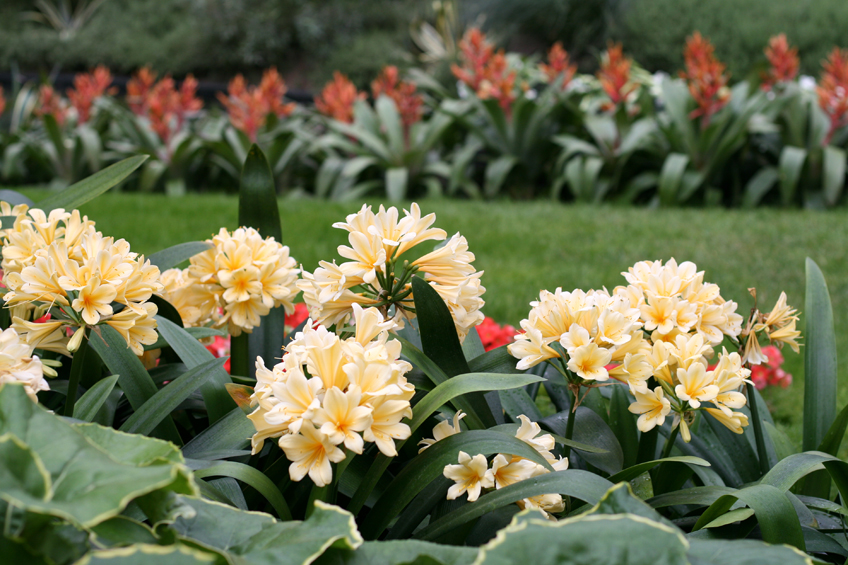
Mass plant lemon, peach and cream clivias in shaded areas under trees. Photo - Slowfish/Shutterstock
Fact file
Name: Clivia sp.
Origins: Southern Africa
Flowering: Spring
A genus of six species of herbaceous evergreen plants with strap leaves. Intense hybridisation by breeders has resulted in colours varying from deep orange,
through yellows, peach and a rare white.
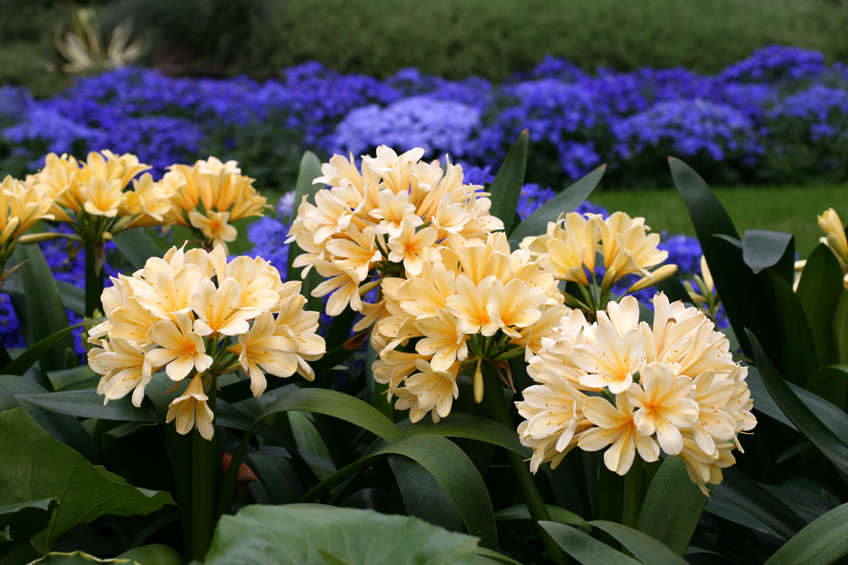
We love the fact that lemon clivia clash less than their orange cousins with the traditional colours of the spring garden. Photo - Slowfish/Shutterstock
Now: Clivia flowers glow against lush deep-green straps of foliage in spring.
Later: : Autumn is the time to divide plants. Uproot them and pull them apart into several chunks. Replant into improved soil under shade (they
enjoy morning sun). Fleshy berries following the flower clusters. Clivia-fans collect the berries, soak the flesh off in water overnight then sow into
trays of seed-raising mix with fingers cross for new and amazing colours. They have to be patient though. New seedlings come up fairly quickly but
may take up to seven years to flower.
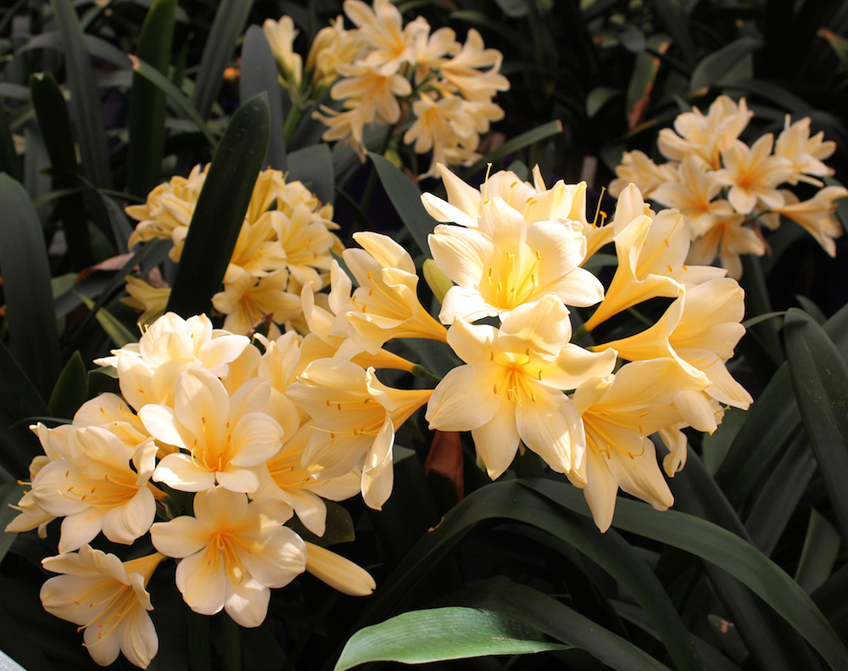
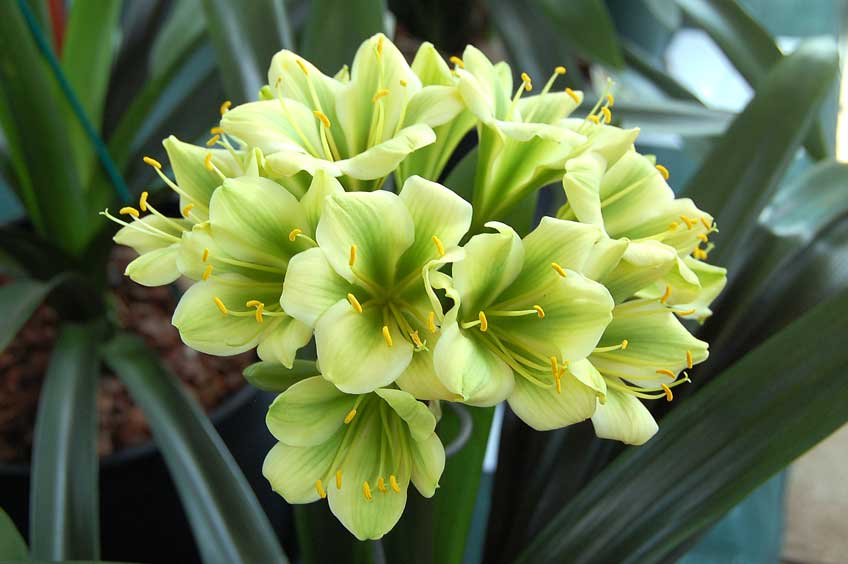
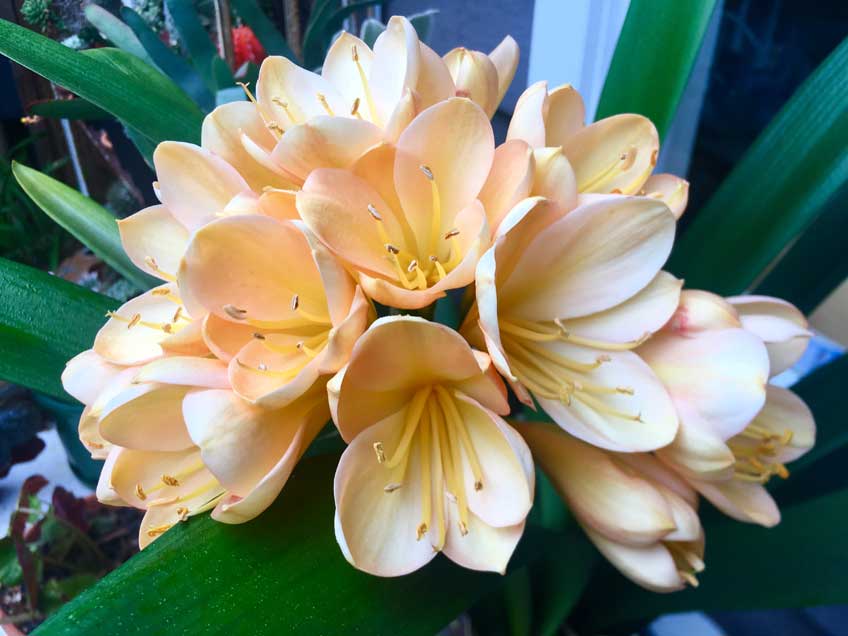
New colours are appearing all the time, including almost-white, green, peach and apricot. Photo - Linda K. Ross
We love them with
a tropical look alongside bromeliad patches, under similar-toned angel trumpet trees (Brugmansia) or with tropical favourites like Philodendron, gingers
and hot-toned canna lilies such as ‘Bengal Tiger’. We also like sticking to a single colour and planting swathes of the same hybrid for impact. In
cottage or Sydney-style gardens where the main spring tone is pink due to camellias and azaleas, they are much harder to use. The discord of pink azaleas
with orange clivia gives us the wobbles. Use care, or try the cream hybrids.
Warnings
Clivia lily caterpillar can be devastating. The striped, 6cm-long caterpillars can easily munch through a clump overnight. Use a caterpillar control such
as Success as soon as you spot them. Breakouts of scale or mealy bug insects can be solved with EcoOil.
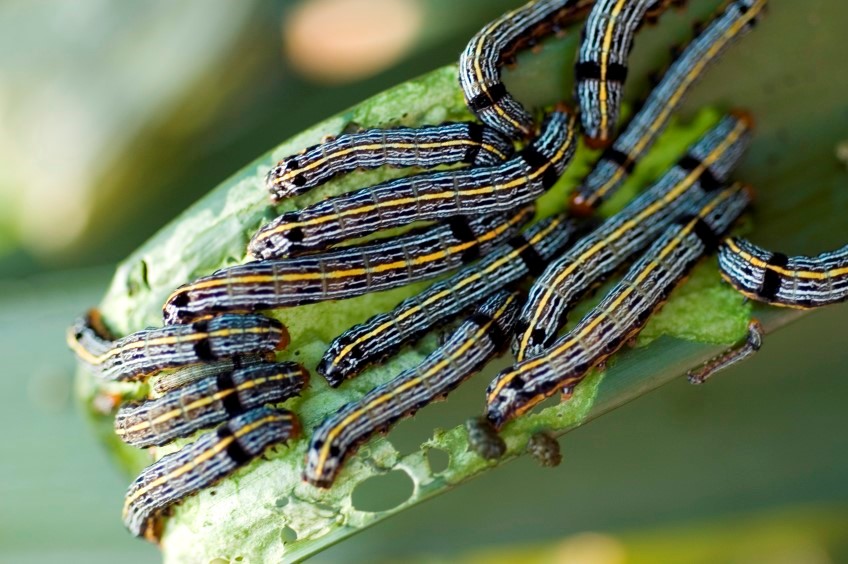
What else
Clivia dislike wet soil and will rot if they are planted too low (with necks undercover) or get too much water when dormant in winter – either via nature
or the tap. Avoid the potential for bogginess by mounding up the soil and planting them ‘high’, with their necks in the air. Keep them dry, they come
from South Africa remember!
Troubleshooting
Mealybug can be a persistent pest, and is commonly one that affects clivia. The pests proliferate quickly, deep down at the leaf bases where they can go
unnoticed and protected from predators. Eco-Oil can be effective if sprayed directly on to mealybug. This can be difficult given they are usually well
hidden, but good contact will kill them. As a secondary issue, mealybugs excrete ‘honeydew’. This substance becomes a catalyst for black sooty mould
that can disrupt plant health. Often this is the first noticeable sign of mealybug presence. Ants utilise honeydew and will often be seen where mealybug
exist. Try mixing Eco-Oil and Eco-Fungicide together at suggested rates and apply as a spray. Be thorough, making sure to contact all parts of the
plant. You might reduce your risk by keeping plants free of fallen leaves, as these can assist mealybug proliferation.
Where to buy
-
Your local nursery. Mail order specialists
-
Clivia Society of New South Wales annual spring show in September
-
Mother Earth Nursery, Kenthurst, Clivia Showcase throughout September
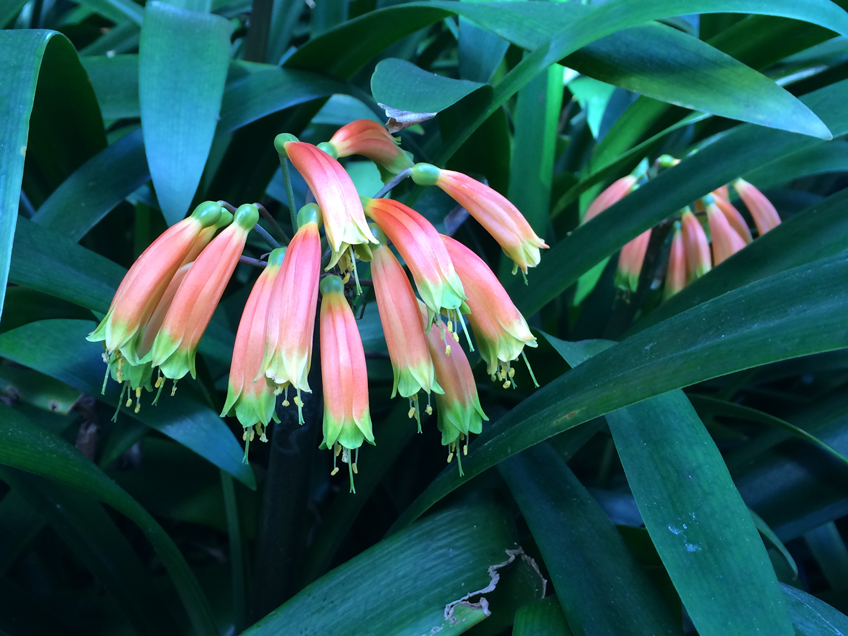
Look at this more unusual green-tipped forest lily (Clivia nobilis). Not as spectacular as the showy miniata hybrids, these nonetheless have a certain droopy charm. Pendulous flowers hang low and are red or orange tipped with green. This plant is often seen as an indoor plant in the northern hemisphere. Photo - Linda K. Ross, Botanic Gardens Sydney
Text: Linda Ross